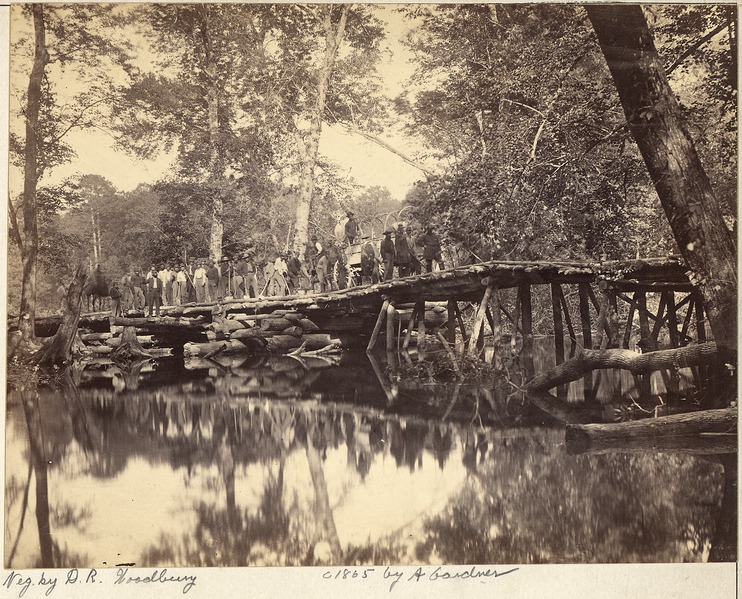Stuart's tired troops rode throughout the night under the full moon, heading toward the crossing of the Chickahominy at Forge Bridge, seven miles ahead. The prisoners were mounted on mules to speed the march. The Confederate troops began to fall asleep on their horses, slowing the column's march. At around dawn they arrived at the Chickahominy, and, instead of the slow placid ford that was expected, it was a roaring torrent. Colonel Rooney Lee dismounted and dove into the stream to see if it could be crossed. He had a hard swim, and was almost drowned before he returned to shore. “Colonel,” he was asked, “what do you think of the situation.” “Well, Captain,” he replied, “I think we are caught.” A few of the best swimmers crossed the river, including one with a message to Lee asking for diversion to be made.
 |
| Cavalry Charge later in the war |
Stuart ordered axes brought up, and trees were cut down to try to cross on them, but they were too short to reach the other side. Some men built a raft, but it tipped, throwing them into the water. It was finally decided that instead of wasting more time, they had to go to the sight of the bridge which had been destroyed, and repair it in order to cross the river. Boards were brought out of a nearby warehouse and a shaky bridge was built. The troopers were able to walk across while their horses swam along side. In order to get the guns across the main beams of the warehouse were knocked down, and they were just long enough to form a proper bridge. The command was soon across, and just ten minutes after they reached the opposite bank, the outriders of the Federal cavalry rode up and opened a scattering fire. Although they had a long march back to the Confederate main body, they had escaped their worst danger.
 |
| Bridge over the Chickahominy |
Stuart's expedition had been successful, and he had brought fame upon himself and his men. In his report he wrote to Lee:
The success attending this expedition will no doubt cause 10,000 or 15,000 men to be detached from the enemy's main body to guard his communication, besides accomplishing the destruction of millions worth of property and the interruption for a time of his railroad communication. The three commanders (the two Lees and Martin) exhibited the characteristics of skillful commanders, keeping their commands well in hand and managing them with skill and good judgment, which proved them worthy of a higher trust. Their brave men behaved with coolness and intrepidity in danger, unswerving resolution before difficulties, and stood unappalled before the rushing torrent of the Chickahominy, with the probability of an enemy at their heels armed with the fury of a tigress robbed of her whelps. The perfect order and systematic disposition for crossing maintained throughout the passage insured its success and rendered it the crowning feature of a successful expedition. I hope, general, that your sense of delicacy, so manifest on former occasions, will not prompt you to award to the two Lees (your son and nephew) less than their full measure of praise. Embalmed in the hearts and affections of their regiments; tried on many occasions requiring coolness, decision, and bravery; everywhere present to animate, direct, and control, they held their regiments in their grasp and proved them- selves brilliant cavalry leaders.Later one of his aides, John Eston Cooke, said to Stuart, "That was a tight place at the river, General. If the enemy had come down upon on us, you would have been compelled to have surrendered." "No," Stuart answered, "one other course was left. To die game."
 |
| Stuart |



0 comments:
Post a Comment